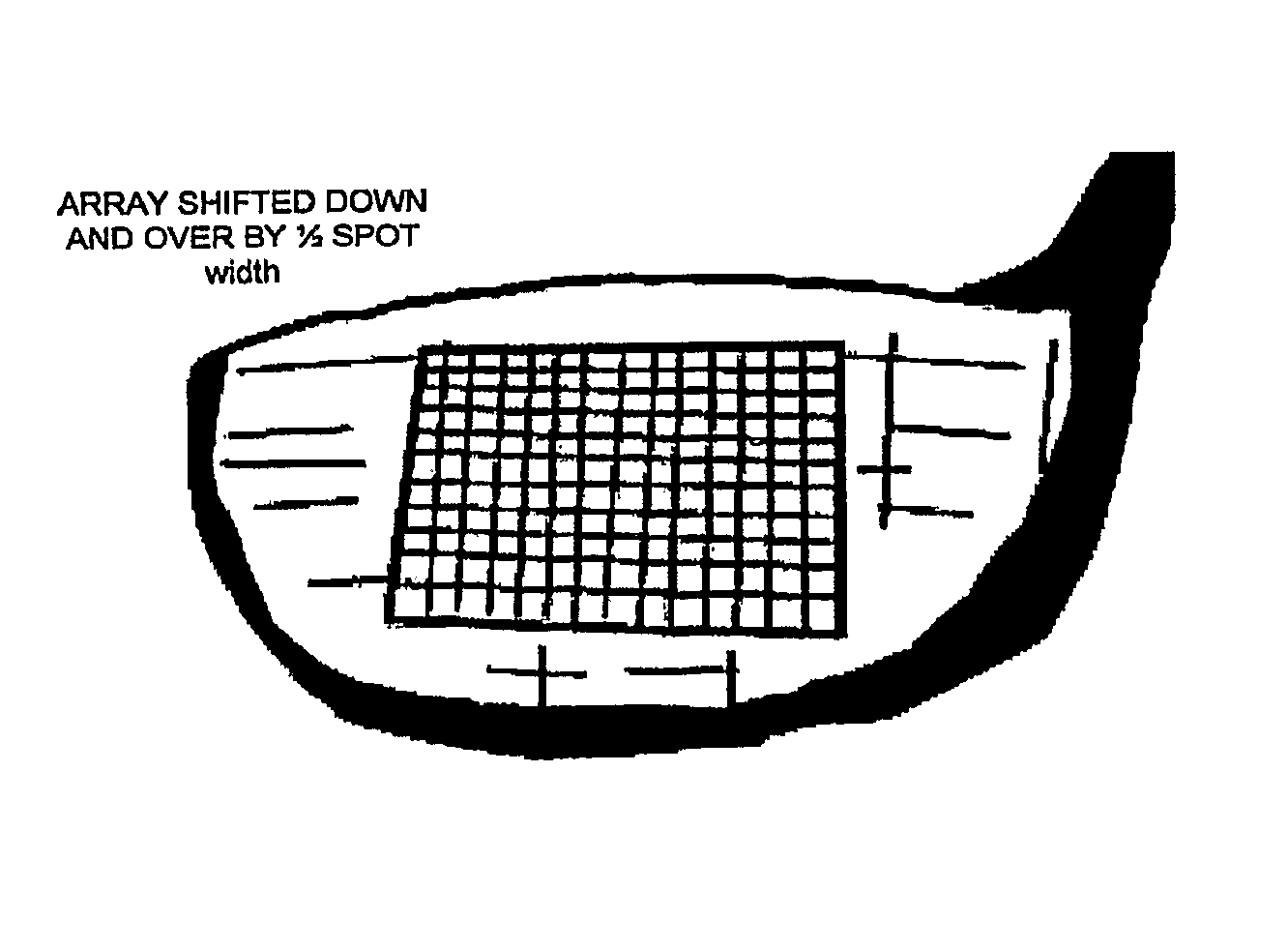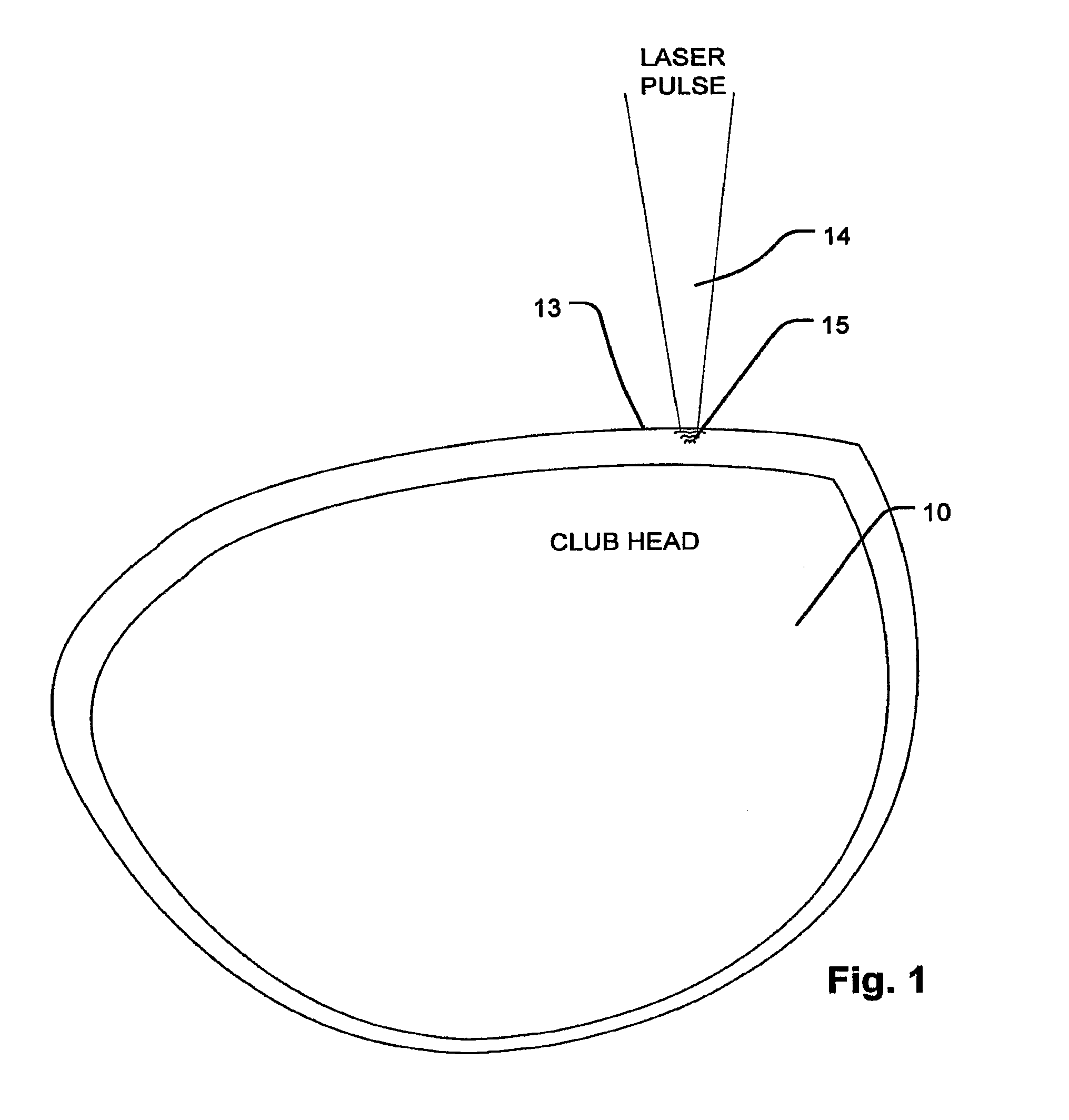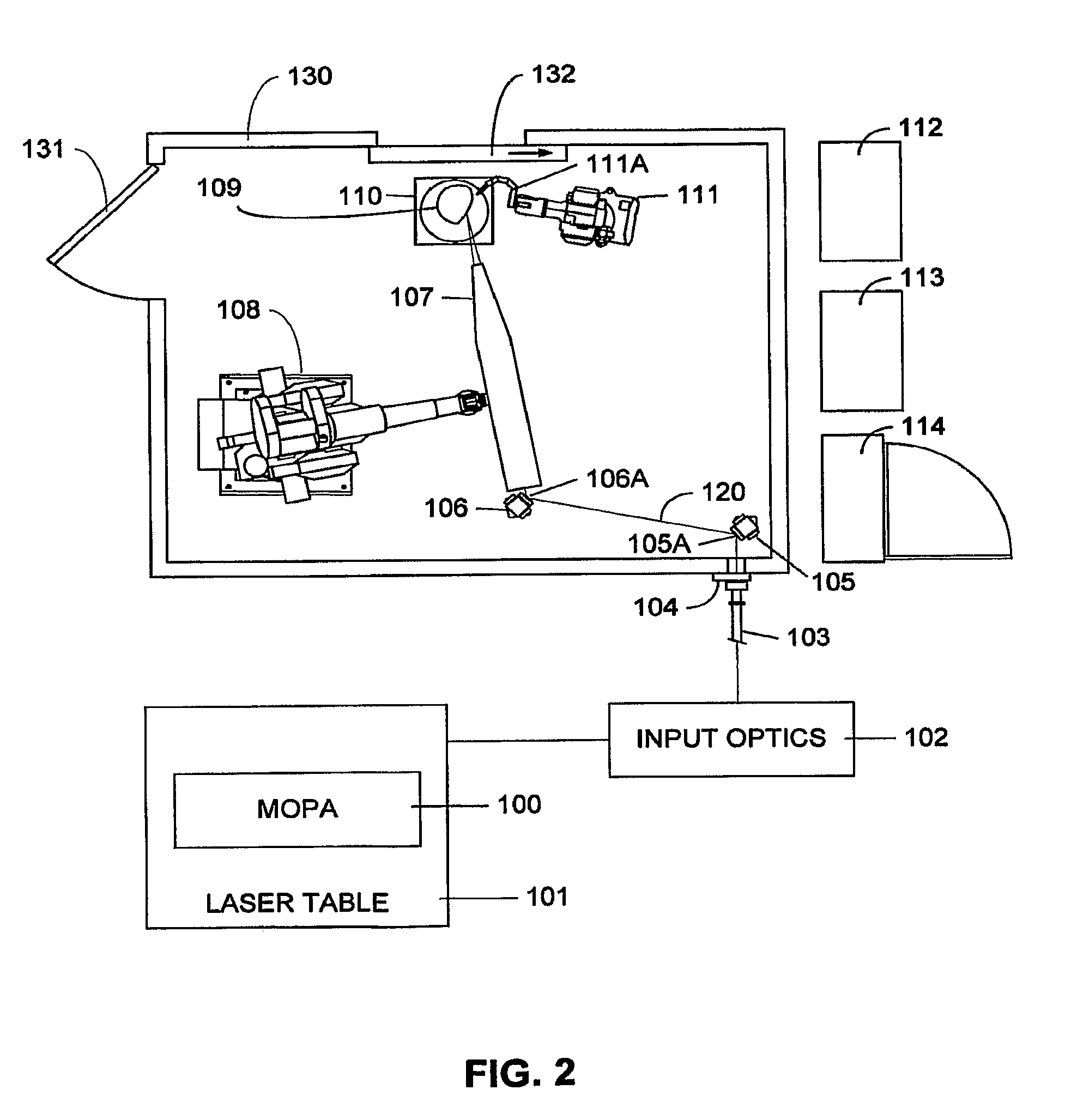Engineered residual stress in golf clubs
a residual stress and golf club technology, applied in the field of golf clubs, can solve the problems of no discussion of the process used for the striking surface of the ball, no commercial application of the process, and act too much like, so as to improve the effect of reducing the characteristic time characteristic of the golf club, and enhancing the performance of the golf club
- Summary
- Abstract
- Description
- Claims
- Application Information
AI Technical Summary
Benefits of technology
Problems solved by technology
Method used
Image
Examples
Embodiment Construction
[0039]A detailed description of embodiments of the present invention is provided with reference to the FIGS. 1-19.
[0040]A process for treating the impact face of golf clubs to achieve a response that provides increased release speed of the golf ball without increasing the Coefficient of Restitution (COR) of the club beyond acceptable limits, or while maintaining and actually reducing COR is described. This process imparts a deep and high intensity residual compressive stress into the club face resulting in an increase in the ball release speed and a decrease in the COR. The increase in release speed enables a struck ball to travel farther; maintaining the COR provides for a club that meets international standards for permitted competitive use. Furthermore, the characteristic time CT measurement is actually reduced for clubs treated in the manner described.
[0041]This improvement in club performance by employing laser peening can be achieved using a range of laser peening parameters a...
PUM
| Property | Measurement | Unit |
|---|---|---|
| depth | aaaaa | aaaaa |
| depth | aaaaa | aaaaa |
| depth | aaaaa | aaaaa |
Abstract
Description
Claims
Application Information
 Login to View More
Login to View More - R&D
- Intellectual Property
- Life Sciences
- Materials
- Tech Scout
- Unparalleled Data Quality
- Higher Quality Content
- 60% Fewer Hallucinations
Browse by: Latest US Patents, China's latest patents, Technical Efficacy Thesaurus, Application Domain, Technology Topic, Popular Technical Reports.
© 2025 PatSnap. All rights reserved.Legal|Privacy policy|Modern Slavery Act Transparency Statement|Sitemap|About US| Contact US: help@patsnap.com



